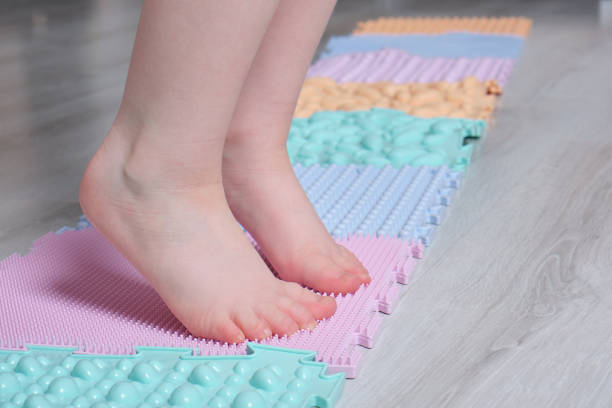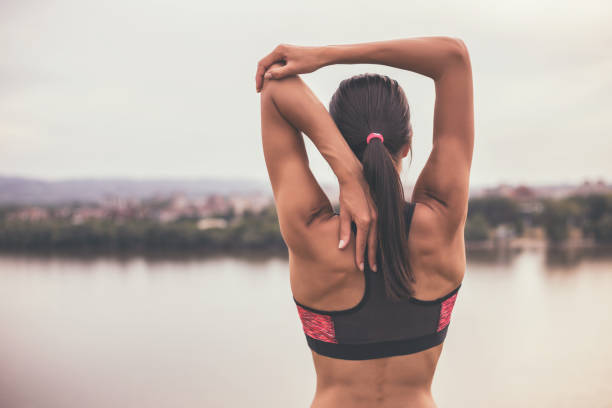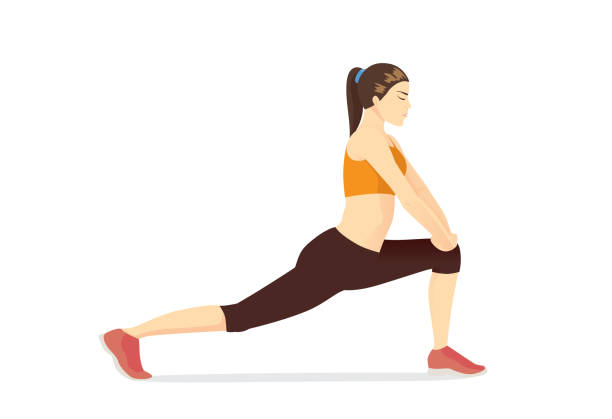
Introduction to Postpartum Back Pain: Common Causes and Symptoms
You might have heard about pregnancy and how it can change a woman’s body. When a woman gives birth to a baby, her body goes through a lot of changes. Back pain is one of the most common problems that new mothers face after giving birth.
The Impact of Pregnancy on Your Body
During pregnancy, a woman’s body undergoes many changes. Her uterus grows bigger, the weight of the baby puts pressure on her back and stomach, and hormones relax the ligaments in her body. All these changes can cause back pain during and after pregnancy.
Why Postpartum Back Pain Occurs
After childbirth, a woman’s body goes through many physical and emotional changes. One of the reasons behind postpartum back pain is the weakened abdominal muscles that can no longer support the spine. This puts extra pressure on the lower back muscles, leading to pain and discomfort.

Heel Slides: A Gentle Exercise for Postpartum Back Pain Relief
If you’re a new mom, you don’t have to suffer from back pain. There are many exercises you can do to help relieve your discomfort. One such exercise is called heel slides.
How to Perform Heel Slides Correctly
Lie on your back with your knees bent and your feet flat on the floor. Slowly slide one heel away from your body, keeping your hips and lower back pressed into the floor. Hold for a few seconds before sliding the heel back to the starting position. Repeat with the other leg.
The Benefits of Heel Slides for New Mothers
Heel slides gently stretch the muscles in your lower back, hips, and legs. This exercise improves blood flow to your back muscles and helps them relax. Regular heel slides can help alleviate postpartum back pain and enhance your overall recovery after delivery.
Understanding Your “Core”: The Key to Postpartum Back Pain Relief
When we talk about the core, we’re not just referring to your abs. Your core includes your abs, back muscles, pelvic floor, and diaphragm. All these muscles work together to provide stability to hip bones and your spine.
Components of the Core and Their Roles
Your abs help support your spine’s forward movement, while your back muscles support its backward movement. Your pelvic floor muscles support the bladder, uterus, and rectum. The diaphragm helps with breathing and supports your upper body.
The Importance of a Strong Core in Postpartum Recovery
A strong core helps maintain proper posture and balance, reducing the chances of injury. A strong core also helps you perform daily tasks like carrying your baby, bending, and twisting safely.
Knee-to-Chest Stretch: A Simple Exercise for Back Pain Relief
Another gentle exercise that can help relieve postpartum back pain is the knee-to-chest stretch.
Performing the Knee-to-Chest Stretch Safely
Lie on your back with your knees bent and your feet flat on the floor. Slowly bring one knee toward your chest, gently pressing it with your hands. Hold for a few seconds before releasing the leg back to the starting position. Repeat with the other leg.
Benefits of the Knee-to-Chest Stretch for Postpartum Back Pain
The knee-to-chest stretch helps stretch your lower back muscles, hips, and legs. It also improves blood flow to your lower back, reducing inflammation and tension. Regular practice of this stretch can help alleviate postpartum back pain and enhance your overall recovery after delivery.
Supported Forward Bend: A Gentle Stretch for New Mothers
The forward bend is a gentle stretch that can help relieve tension in your spine and lower back muscles. It’s a great exercise for new mothers who may feel tightness in this area due to carrying their baby around. Here’s how to perform the supported forward bend:
1. Start by sitting on the floor with your legs stretched out in front of you.
2. Place a pillow or rolled up towel on the floor in front of your feet.
3. Slowly lean forward and place your forehead on the pillow or towel.
4. Hold the position for 10-15 seconds, then slowly release.
The benefits of the supported forward bend include improved flexibility, reduced tension in the lower back muscles, and improved posture. This exercise is also great for reducing stress and promoting relaxation.
Shoulder Rolls: Easing Upper Back Pain After Pregnancy
The shoulder roll is another great exercise for new mothers who are experiencing upper back pain. It’s a simple exercise that can be done while sitting or standing. Here’s how to do it:
1. Stand or sit up straight with your arms at your sides.
2. Slowly roll your shoulders forward in a circular motion.
3. When your shoulders are as close to your ears as possible, hold the position for a few seconds.
4. Slowly roll your shoulders back to the starting position.
5. Repeat 10-15 times.
The shoulder roll is great for relieving tension and tightness in the upper back muscles. It can also improve posture and reduce the risk of future back pain.
Upper Back Mobility: T-Spine Rotations for Postpartum Recovery
T-spine rotations are great for improving the mobility of your upper back. This exercise is especially helpful if you spend a lot of time sitting or holding your baby. Here’s how to perform T-spine rotations:
1. Start by kneeling on the floor with your arms extended in front of you.
2. Slowly twist your torso to the right, bringing your left hand to your right shoulder.
3. Hold the position for a few seconds, then slowly twist your torso back to the starting position.
4. Repeat on the other side.
T-spine rotations are great for improving mobility in the upper back and reducing tension in the muscles. They’re also good for improving posture and reducing the risk of future back pain.
Twisting Cat: A Yoga-Inspired Exercise for Back Pain Relief
The twisting cat pose is a yoga-inspired exercise that’s great for relieving tension in the lower back. It’s a gentle stretch that can help alleviate pain and improve flexibility. Here’s how to perform the twisting cat pose:
1. Start on your hands and knees, with your wrists directly under your shoulders and your knees under your hips.
2. Inhale and lift your right arm up towards the ceiling.
3. As you exhale, bring your right arm underneath your body and thread it through the space between your left arm and knee.
4. Gently twist your torso to the left as you rest your right shoulder and ear on the floor.
5. Hold the position for a few deep breaths, then slowly release.
6. Repeat on the other side.
The twisting cat pose is great for stretching out the lower back muscles and improving flexibility. It can also help to reduce tension and relieve pain.

Back Stretches: Essential Exercises for Postpartum Back Pain Relief
Back stretches are essential for postpartum back pain relief. They’re a great way to improve flexibility, reduce tension, and promote relaxation. Here are some of the best back stretches for postpartum recovery:
1. Child’s Pose: Start on your hands and knees and then lower your hips back onto your heels. Stretch your arms out in front of you and rest your forehead on the floor.
2. Cobra Pose: Lie face down on the floor with your hands beside your shoulders. Inhale and lift your chest off the floor, keeping your elbows close to your sides.
3. Cat-Cow Pose: Start on your hands and knees. On an inhale, arch your back and lift your tailbone towards the ceiling (Cow Pose). On an exhale, round your spine and tuck your head and chin towards your chest (Cat Pose).
4. Seated Spinal Twist: Sit comfortably on the floor with your legs extended in front of you. Bend your right knee and place your foot on the outside of your left knee. Twist your torso to the right as you place your left arm on the outside of your right knee.
These stretches are great for improving flexibility, reducing tension, and promoting relaxation. They’re also easy to do at home and can be done in just a few minutes a day.
Hips, Hamstrings, and Lower Back: Targeted Exercises for Postpartum Recovery
The Connection Between Hips, Hamstrings, and Lower Back Pain
The muscles in your hips, hamstrings, and lower back are all connected. When one muscle is tight or weak, it can cause problems for the others. For example, tight hip flexors can cause your pelvis to tilt forward, which puts extra stress on your lower back. Weak glutes (buttock muscles) can also contribute to lower back pain. By strengthening and stretching all these areas, you can help alleviate back pain and prevent it from coming back.
Effective Exercises to Strengthen and Stretch These Areas
There are many exercises you can do to target these areas. Some effective ones include:
Hip flexor stretch: Kneel on one knee and lean forward, keeping your back straight. You should feel a stretch in the front of your hip. Hold for 30 seconds and repeat on the other side.
Hamstring stretch (standing): Place one foot on a step or chair and reach forward with your hands until you feel a stretch in the back of your leg. Hold for 30 seconds and repeat on the other side.
Lower back stretch: Lie on your back with your knees bent and feet flat on the floor. Slowly roll your knees from side to side, keeping your shoulders on the ground.
Glute bridge: Lie on your back with your knees bent and feet flat on the floor. Lift your hips up, squeezing your glutes at the top. Lower back down and repeat.
Bird dog: Start on your hands and knees, with your wrists directly under your shoulders and your knees directly under your hips. Lift one arm and the opposite leg, keeping your back and hips level. Return to starting position and repeat on the other side.

Hamstring Stretch (Lying Down): A Safe Exercise for New Mothers
How to Perform the Lying Down Hamstring Stretch
One safe and effective exercise for relieving postpartum and back pain is the lying down hamstring stretch. To perform this exercise:
Lie on your back with both legs straight.
Bend one knee and bring your bent knee with it towards your chest.
Straighten the other leg and lift the leg straight with it up, keeping it as straight as possible.
Gently pull the lifted leg towards you until you feel a stretch in your hamstring.
Hold for 30 seconds and repeat on the other side.
Benefits of the Lying Down Hamstring Stretch for Postpartum Back Pain
The lying down hamstring stretch is a gentle exercise that targets the back of your legs (hamstrings) and your lower back. It can help improve flexibility, which can reduce your risk of injury and alleviate pain. This exercise is especially good for new moms because it can be done lying down, which is a comfortable position if you’re feeling tired or sore.
The Best Postpartum Back Pain Exercises: A 5-Move Sequence
Creating a Balanced Exercise Routine for Back Pain Relief
To get the most benefit from your exercises, it’s important to create a balanced routine. This means including exercises that target different areas of your body, like your hips, hamstrings, glutes, abs, and back. By working all these areas, you can help improve your posture, reduce pain, and increase strength.
How Often to Perform These Exercises for Optimal Results
For optimal results, aim to do these exercises 2-3 times per week. You can do them all at once as a workout, or break them up throughout the day. Listen to your body and start slowly, gradually increasing the intensity and frequency as you become stronger and more comfortable. Remember, consistency is key!
Glute Bridge: Strengthening Your Glutes for Back Pain Relief
How to Perform the Glute Bridge Correctly
The glute bridge is a great exercise for strengthening your glutes and lower back. To do this exercise:
Lie on your back with your knees bent and feet flat on the floor.
Engage your glutes and lift your hips, keeping your feet and shoulders on the ground.
Hold for 3-5 seconds, then lower back down.
Repeat for 10-15 repetitions.
The Connection Between Glute Strength and Back Pain
Strong glutes can help support your lower back, reducing the strain on your back muscles. By doing exercises like the glute bridge, you can help improve your posture and alleviate back pain. Plus, strong glutes look great too!
Bird Dog: An Effective Core and Back Exercise for Postpartum Recovery
Proper Technique for the Bird Dog Exercise
The bird dog is a great exercise for improving your core and back strength. To perform this exercise:
Start on your hands and knees, with your wrists directly under your shoulders and your knees directly under your hips.
Engage your front core muscles and lift one arm and the opposite leg, keeping your back and hips level.
Hold for 3-5 seconds, then lower back down.
Repeat on the other side.
Do 10-15 repetitions on each side.
Benefits of Bird Dog for Postpartum Back Pain
The bird dog exercise targets some of the key muscles that can contribute to back pain, including your abdominals and lower back muscles. By strengthening these muscles, you can help support your spine and reduce the risk of injury. Plus, this exercise is great for your balance and coordination too!
Postpartum back pain is a common issue that many new moms face, but it doesn’t have to rule your life. By incorporating targeted exercises like these into your routine, you can help alleviate your pain and feel stronger and more confident. Remember, start slowly and listen to your body, and always check with your healthcare provider before starting a new exercise program.

Does the MUTU System Include Exercises for Relief from Back Pain?
Are you a new mom experiencing back pain after delivery? You’re not alone. Many mothers go through this, and it can be tough to find relief. That’s why the MUTU System can be an excellent solution for you.
Overview of the MUTU System and Its Benefits
The MUTU System is a comprehensive exercise program designed to help women recover after pregnancy and childbirth. The system includes various types of workouts that target different areas of the body. MUTU can help you improve your core strength, increase your flexibility, and relieve pain and discomfort in your back after childbirth.
How MUTU Can Help Alleviate Postpartum Back Pain
The MUTU System includes specific exercises that can help alleviate back pain. For example, the program focuses on pelvic floor muscles which can be weakened during pregnancy and childbirth, leading to back pain. By strengthening these muscles, you can improve your posture, decrease pressure on your back, and decrease discomfort. The exercises can also help to correct any muscle imbalances that may be causing back pain.
When Should You Seek Help for Postpartum Back Pain?
If your back pain is severe or persists beyond a few days, it’s essential to seek medical advice. Here are some signs that it’s time to consult a healthcare professional:
– Difficulty standing up straight
– Pain that radiates down your leg
– Numbness or tingling in your legs or feet
– Loss of bladder or bowel control
The Role of Physical Therapy in Postpartum Back Pain Relief
Physical therapy can help moms experiencing postpartum back pain. A physical therapist can assess your posture, strength, range of motion, and movement patterns. Then, they can develop a customized treatment plan for you, including specific exercises and stretches to relieve your back pain and improve your overall health.
Can Carrying a Baby Cause Back Pain? Tips for Holding Your Baby Safely
Yes, carrying your baby can cause back pain. However, there are ways to carry your baby safely to minimize the strain on your back. Here are some proper techniques for carrying and lifting your baby:
– Use a baby carrier or sling that distributes your baby’s full body weight more evenly across your body.
– Hold your baby close to your body to reduce the leverage on your spine.
– Alternate arms when carrying your baby to avoid overusing one side of your body.
– Avoid twisting your body when lifting your baby.
Ways to Minimize Strain on Your Back While Caring for Your Child
Caring for your child can be a physically demanding task, but you can minimize the strain on feeding baby on your back with these tips:
– Use a comfortable chair or cushion when breastfeeding or bottle-feeding your baby.
– Use a changing table at waist height to change your baby’s diaper instead of doing it on the floor or bed.
– Avoid prolonged standing or sitting in one position.
– Practice good posture by maintaining a neutral spine and keeping your shoulders relaxed.

Are There Any Foods That Help Back Pain After Delivery?
Yes, the right nutrients can help support back health healthy pregnancy and recovery after delivery. Here are some best foods to include in your postpartum diet:
– Omega-3 fatty acids found in oily fish like salmon can help reduce inflammation and pain in the body.
– Foods high in calcium (such as broccoli, kale, and dairy products) can promote strong bones and good posture.
– Magnesium-rich foods (such as leafy greens, nuts, and seeds) can help relax muscles and reduce tension.
Final Thoughts on Postpartum Back Pain: The Path to Recovery
Recovering from postpartum back pain takes time and self-care. It’s important to be patient with your body and not rush back into your normal routine too quickly. Embrace your new normal, relax, and enjoy life with your baby while taking the necessary steps towards recovery. Remember to listen to your body and seek medical advice if symptoms persist. With the right care and attention, your back pain will be a thing of the past, and you can focus on bonding with your baby.


Leave a Reply